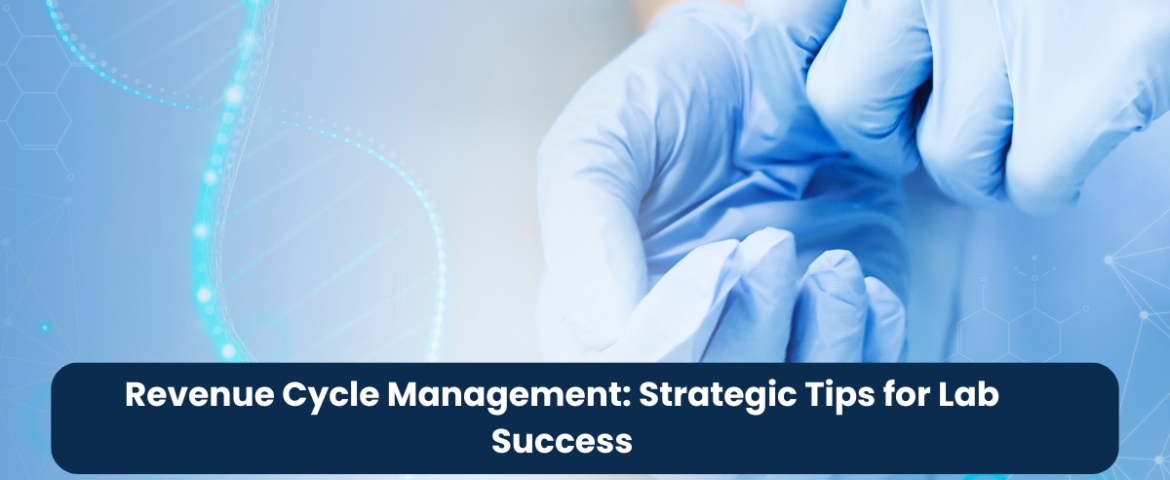Is improving your lab’s financial health part of your 2025 goals? If so, it’s time to shift your mindset about revenue cycle operations. These operations are more than just a cost center they are a valuable strategic asset that can significantly impact your bottom line.
What is Revenue Cycle Management?
Viewing revenue cycle management as a revenue driver rather than just an administrative function can change the way your lab operates. In today’s environment, getting reimbursed for services is more challenging than ever, with delayed payments, denied claims, and the complexities of billing and coding creating ongoing obstacles. These challenges aren’t new, but they demand increasingly sophisticated strategies to tackle them effectively. By adopting the right approaches, your lab can overcome these issues and strengthen its financial foundation. Here is how to start refining your revenue cycle management processes for better results.
1. Shortening the Time Between Service and Reimbursement
Payment delays remain one of the biggest frustrations for labs. From pre-authorization requirements to out-of-network claims, these roadblocks often result in weeks or even months of waiting for reimbursement, creating cash flow challenges.
If your lab still relies heavily on paper-based processes, you’re not alone, but this method is prone to errors that slow down payments. Adopting automated tools powered by AI can help digitize orders and accurately interpret data. These systems can catch common issues like mismatched codes or missing insurance details early, preventing errors before they disrupt your workflow.
Automation also ensures that claims meet the specific requirements of payors, reducing the need for constant manual oversight. With the right tools in place, you can minimize errors, streamline operations, and get reimbursed faster improving cash flow and reducing administrative headaches.
2. Playing Defense Against Denied Claims, Not Just Offense
Denied claims often create an exhausting cycle for labs. Reacting to rejections, filing appeals, and waiting for resolutions can feel like a never-ending process. But what if your lab could prevent denials instead of just responding to them?
Strategy: Learn from Historical Data
Historical data holds valuable insights into the root causes of claim denials. By analyzing past issues such as coding errors or unmet payor requirements you can identify patterns and make the necessary adjustments to prevent the same mistakes from recurring.
A proactive system informed by this data helps ensure claims are submitted correctly the first time. This approach not only saves time but also protects your revenue by reducing the volume of denied claims.
Strategy: Automate Where You Can Payors Already Are
Payors are increasingly relying on automation to flag discrepancies, request documentation, and enforce compliance with their specific requirements. Labs must stay ahead by leveraging their own automation tools to meet these demands.
Automated solutions can streamline processes like generating appeal letters or tracking responses while ensuring accuracy. By combining automation with insights from historical data, labs can address denials more efficiently and improve their chances of successful resolutions.
Strategy: Monitor Success and Payor Correspondence
Automation isn’t a set-it-and-forget-it solution. Regularly reviewing the effectiveness of your appeals and staying on top of communications from payors especially paper correspondence is crucial. Missing a simple request for additional information could result in missed opportunities to address denials promptly.
Strategy: Prioritize High-Value Appeals
Not all claims are equal in importance. Labs can optimize their recovery rates by prioritizing high-value appeals or those with a strong likelihood of success. Leveraging real-time data and automation allows labs to identify and fast-track these critical claims, ensuring resources are focused on the most impactful issues.
3. Staying Current with Billing, Coding, and Payor Requirements
Accurate billing and coding are the cornerstones of effective revenue cycle management, but they can become complex for labs operating across multiple specialties or offering innovative tests. These challenges are compounded by frequent changes in coding systems and payor policies.
Strategy: Combine Technology with Expertise
Keeping up with new codes and regulations is vital to avoid delays, denials, or audits. Automated coding tools integrated with laboratory information systems (LIS) can streamline workflows and minimize manual errors. However, technology alone isn’t enough.
Balancing automation with deep industry expertise ensures your lab can navigate complex payor requirements while staying compliant. Automated systems provide efficiency and consistency, while expert oversight ensures strategic decision-making and tailored solutions. Together, they create a robust system for managing even the most intricate billing and coding processes.
Conclusion
As your lab sets its sights on financial growth in 2025, optimizing your revenue cycle management processes will be crucial to achieving success. By leveraging automation, analyzing historical data, and staying current with industry changes, your lab can transform its revenue cycle operations from a challenge into an opportunity.
Looking for a partner to help you unlock your lab’s full potential? I-Conic Solutions specializes in empowering labs with cutting-edge tools and expert guidance. From streamlining workflows to maximizing reimbursements, I-Conic Solutions is your trusted partner for building a smarter, more profitable revenue cycle. Let us help you achieve your 2025 goals with confidence.



